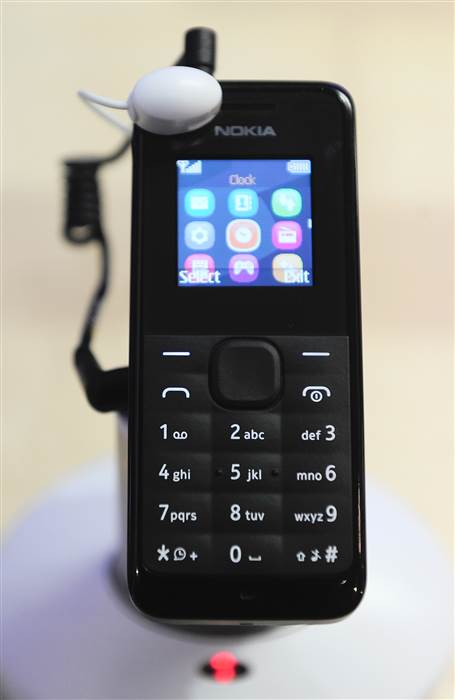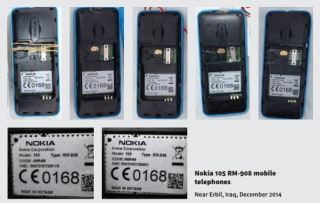
The Nokia 105 is marketed as a super-durable, dirt cheap phone with a long battery life. It also appears to be the most popular device among ISIS’ ranks for setting off bombs.
The must-have cellphone for ISIS fighters in Iraq doesn’t have apps or a camera, and ships for less than $30.
The small and simple Nokia model is frequently used as a trigger device to set off ISIS’ improvised explosive devices, known as IEDs, according to a Conflict Armament Research report released last month.

As part of a study looking at civilian components in ISIS bombs, CAR documented 10 of the phones captured from members of the terror group in Iraq in December 2014.
The research showed the terror group “consistently” used the Nokia 105 above all others “in the manufacture of a specific type of remote controlled IED.”
Two phones are used in the bomb-making process: one to call the other, which then sends a signal to a circuit board and sparks the explosion.
There are plenty of other cheap, durable phones with long battery life that ISIS fighters could use — and yet this particular model, also branded as the Microsoft Mobile 105 after the tech giant bought Nokia in 2014, shows up again and again.
All the militants need is a cheap phone that vibrates.
There is nothing special about the cellphone to suggest it makes a better IED trigger than other similar devices.
Jonah Leff, director of operations at CAR, told NBC News that the reason for the preference is probably twofold: supply and convenience.
ISIS fighters have probably “found a way to get large quantities of these basic and affordable phones,” either by buying or stealing them in bulk, he said.
“We have also seen this with other components, like SIM cards,” Leff added.
And assuming ISIS was able to acquire a large number of Nokia 105s, it would be quicker and easier for the group’s bomb-makers to stick to one model when training other fighters how to make explosives.

“What we have found with other components is that there are a limited number of people teaching ISIS fighters how to use these items for explosives,” Leff said. “These people have streamlined the industry of bomb-making with this particular phone.”
He added that these teachers “are then passing on this knowledge to the group in a systematic way — it’s about knowledge migration.”
And that knowledge is proving deadly.
ISIS has “manufactured and deployed improvised explosive devices … across the battlefield on a quasi-industrial scale,” the report said, adding that these IEDs were “responsible for a large number of civilian and military casualties.”
Locked in conflict across two countries, ISIS-related violence killed more than 18,000 people between January 2014 and October 2015, the United Nations said in January this year.
CAR’s report focused on tracking what it called “the chain of custody” of civilian consumer goods used in ISIS bombs. The research group tracked goods from their manufacturer through the legal marketplace and up to what CAR called the point of “diversion” — when an intermediary intercepts the goods and they fall into ISIS’ hands.
There was no suggestion that any countries or companies mentioned in the report — including Microsoft — were at all involved in the transfer of goods to ISIS.
In fact, Microsoft “provided CAR with extensive information on the chain of custody of ten mobile telephones seized from [ISIS] forces in Iraq,” the report added, although the company declined to comment when contacted by NBC News.
Related: Most ISIS Bombs Made With Civilian Components: Study
These phones were most likely to be acquired by ISIS when they were lawfully sold to small businesses — “the weakest link in the chain” — in nations surrounding ISIS’ territory, according to the study.
And there isn’t much Microsoft can do about terrorists using their phones, Leff said. The onus is on the local outlets and distributors that sell large quantities of phones to “place greater scrutiny on their customers,” he said.
[SOURCE :-nbcnews]

